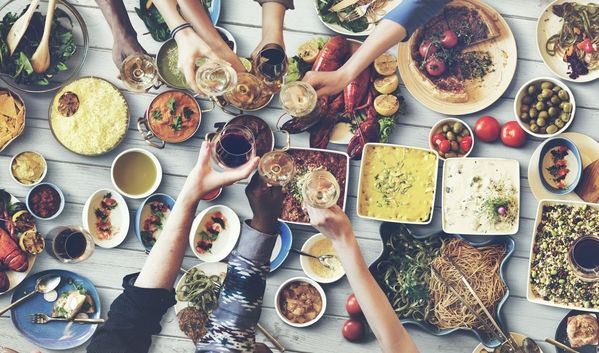If this were a typical fiscal third-quarter report for Darden Restaurants (DRI +1.56%), investors' focus would be trained on the company's comparable sales, from its biggest brands including Olive Garden and Texas LongHorn Steakhouse, to its smaller concepts like Yard House and Cheddar's Scratch Kitchen.
But this isn't your typical earnings reporting period. Today, investors honed in on the steps Darden is taking to weather the COVID-19 pandemic, including the suspension of its dividend, which yielded a handsome 3% on an annualized basis early this year. As we discuss the company's results below, and its actions regarding the coronavirus outbreak, note that all comparative numbers are presented against the prior-year quarter.
Darden Restaurants: A bird's-eye view of the numbers
| Metric | Q3 2020 | Q3 2019 | Change |
|---|---|---|---|
| Revenue | $2.35 billion | $2.25 billion | 4.4% |
| Net income | $232.3 million | $223.6 million | 3.9% |
| Diluted earnings per share (EPS) | $1.89 | $1.79 | 5.6% |
Data source: Darden Restaurants.
Essential highlights from the quarter
- Same-store sales increased by 2.3%, led by comps gains of 2.1% for Olive Garden, 3.9% for LongHorn Steakhouse, and 4.2% for the upscale Capital Grille concept.
- The company added 40 net new restaurants across its eight brands during the quarter, ending the period with 1,812 units.
- Operating margin was roughly flat at 11.8%.
- Darden repurchased $69 million worth of its common stock during the quarter, bringing its fiscal year-to-date buyback total to $300 million.

Image source: Getty Images.
Actions related to COVID-19
In its earnings press release this morning, Darden relayed that its board had made the decision to suspend the company's dividend:
The Board made this determination due to uncertainty driven by the significant reduction in effective restaurant seating capacity and other restrictions mandated by state and local governments in response to COVID-19. The Board of Directors intends to review the Company's quarterly cash dividend policy as developments warrant. Out of an abundance of caution, the Company is also fully drawing on its $750 million credit facility.
The company also withdrew its full-year fiscal 2020 outlook, citing extremely weak business after quarter-end, catalyzed by a decline in restaurant traffic, as well as state-mandated store closures (although in many cases, states are allowing restaurants to stay open for delivery only). For the fourth quarter to date (through last Sunday, March 15), Darden's same-store sales have decreased by nearly 6%. The trend line is even more vivid, as same-store sales were recorded at 3%, (0.2%), and (20.6%) for each of the first three weeks of the quarter, respectively.
Darden's CFO Rick Cardenas noted that with the drawdown of its short-term credit line, Darden has $1 billion in cash on hand, which the organization believes will position it to manage "potential near term volatility under the current market conditions."
Near-term volatility may be a best-case scenario for Darden. Even after removing $476 million in unearned revenue from its current liabilities (an amount presumably tied to loyalty programs and thus not subject to immediate customer claims), the company displayed suboptimal liquidity at the end of the third quarter: Current liabilities of $1.2 billion outnumbered current assets of $686 million by nearly two to one.
Certainly the maxing of the company's credit line has improved this ratio and eased the potential for a liquidity squeeze -- at least for a quarter or two. But Darden may need to take more drastic actions if the plunge in eating out doesn't reverse course soon. Like most restaurant operators, the company has a fair amount of fixed obligations, like payroll, insurance, and restaurant lease payments, that remain present regardless of the level of customer activity. Investors appeared reassured by the company's proactiveness at this stage, however, as its beaten-down shares, which had lost nearly 70% of their value year to date, rose as much as 15% in afternoon trading on Thursday.






